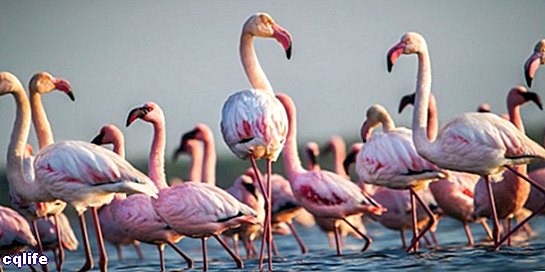- What is the population?
- Characteristics of the populations
- Absolute population and relative population
- Population in statistics
- Population in biology
We explain what population is and the use of the term in demography, statistics and biology. Also, absolute and relative population.

What is the population?
The term population is in common use in different Sciences, so much natural (for example, the biology) What social Y formal (especially the demography and statistics), but its definition is not always done in the same specific sense.
The popular and common use of this word refers to the amount of persons there is at a certain time in a specific place. This concept is similar to the one used by statistics, which is used for the members of any sample: if we interview 200 European tourists in a spa in Morocco, that is the statistical population.
The demography is the science that studies populations and is interested in the people who inhabit a geography determined. In other words, it considers them as a collective entity with continuity in the weather, whose individuals share characteristics and behaviors that determine that permanence.
A population is, from this point of view, the stock of people in a region determined. Population studies are part of different approaches to the society, who seek to understand the particular way in which the different cultures Y nations, as well as the particular dynamics that, as a group, they face.
In this way, it is possible to talk about active population, population in risk, electoral population and an immense etcetera, depending on which point of view is used. Likewise, a historical view of the population provides information, for example, on the quality and way of life of its people at a given chronological moment.
Characteristics of the populations
Broadly speaking, we can characterize the populations as follows:
- The population is a collective entity, that is, it is made up of a variable number of individuals with certain common demographic characteristics.
- Every population has a specific historical moment and geographic location. No population exists in the abstract.
- Populations are "reproductive systems", that is, individuals that die are replaced by young individuals, keeping the number of settlers relatively stable. If this number changes, certain explanations can be sought: if it rises, the birth rate get over her mortality or is there immigration; and if the opposite occurs, mortality exceeds the birth rate or there are emigrations.
- Populations are usually analyzed using techniques and statistical practices, which reveal information about its internal trends.
Absolute population and relative population

Despite its small absolute population, Monaco has the largest relative population.
These two terms are usually in common use in population and demographic studies.
The absolute population It is the total number of settlers or members of a given population. When we talk about the number of people in the world, for example, we conclude that we have an absolute population of approximately 7.7 billion people.
Instead, the relative population refers to the way the settlers are distributed within their geographical space or determined territorial. It is also called population density.
This is statistically calculated, and is expressed in an average number of inhabitants per unit area, for example: the approximately 7.7 billion people in the world are not evenly distributed, so there will be very small countries that are very densely populated, and very sparsely populated large countries.
The countries with the largest relative population are:
- Monaco. With 19,200 inhabitants per square kilometer of surface.
- Singapore. With 7,720 inhabitants per square kilometer of surface.
- Hong Kong. With 6,646 inhabitants per square kilometer of surface.
- Bahrain With 1,789 inhabitants per square kilometer of surface.
- Maldives. With 1,364 inhabitants per square kilometer of surface.
The countries with the smallest relative population are:
- Mongolia. With 2 inhabitants per square kilometer of surface.
- Australia. With 3 inhabitants per square kilometer of surface.
- Iceland. With 3 inhabitants per square kilometer of surface.
- Namibia. With 3 inhabitants per square kilometer of surface.
- Libya. With 4 inhabitants per square kilometer of surface.
Population in statistics
The statistical population is the set of individuals, animals or objects that make up a statistical sample, that is, of which it is desired to study their common characteristics or their common behavior, in relative or trend terms. From this study the statistics will be able to obtain conclusions and express them in mathematical terms.
Statistical populations can be:
- Finites. In other words, limited, like the number of cats in the same park.
- Infinite Like the number of whole numbers that we can think of.
But only from finite populations can valid conclusions be obtained, since the statistical procedure starts from taking a representative sample of the total, and it is impossible to do so if the population is unlimited.
Population in biology

In turn, biology handles its own concept of population. A biological population is a set of organisms of the same species (either animal, vegetable, or whatever type) that share space, weather and biological properties.
The individuals that compose it reproduce among themselves and have the same ecological interactions and survival requirements.
